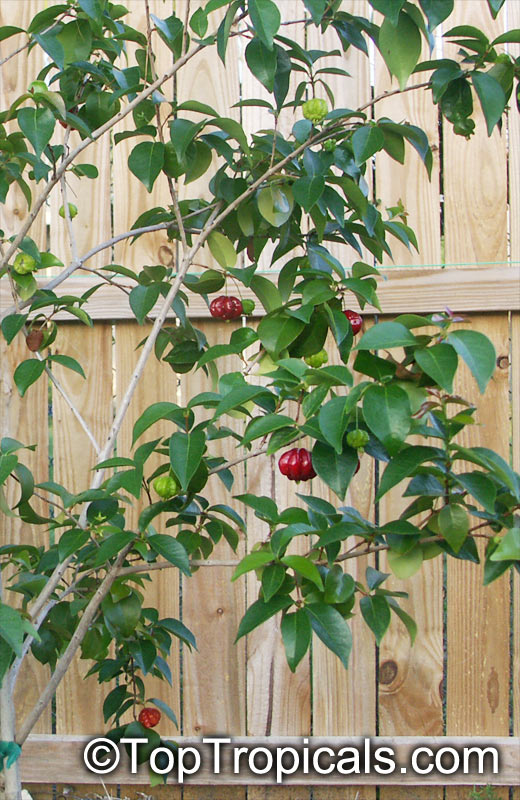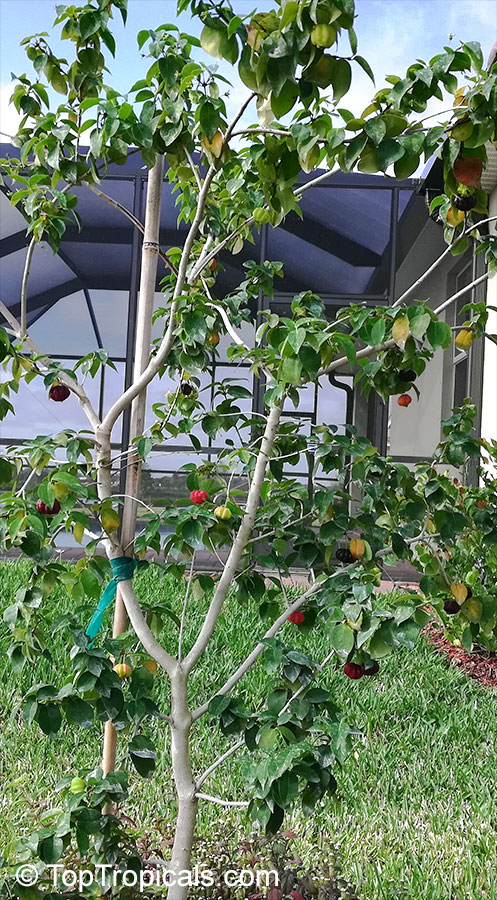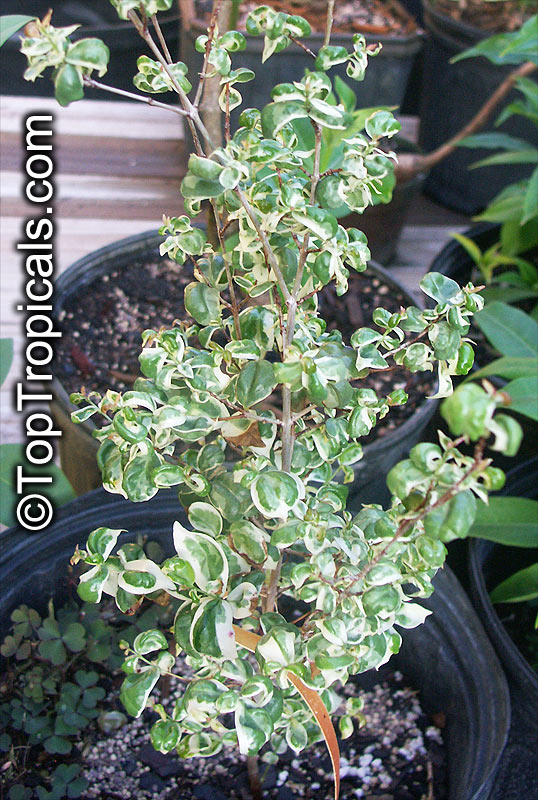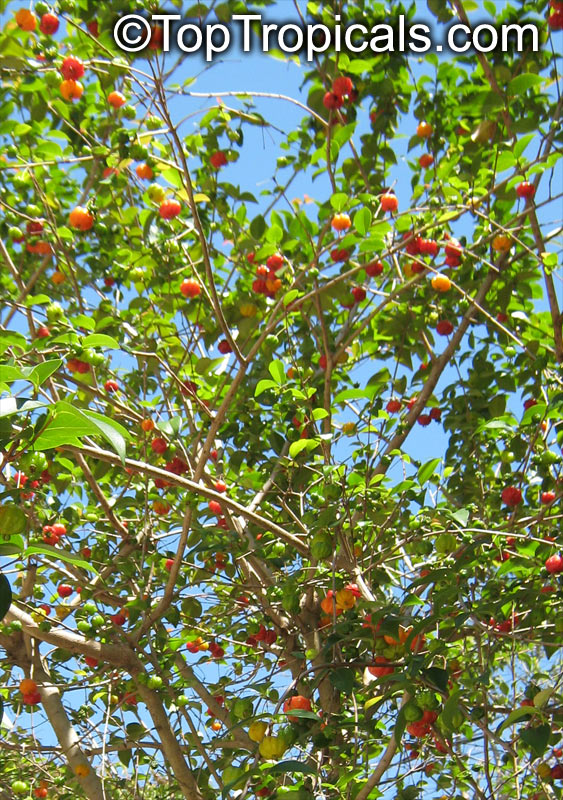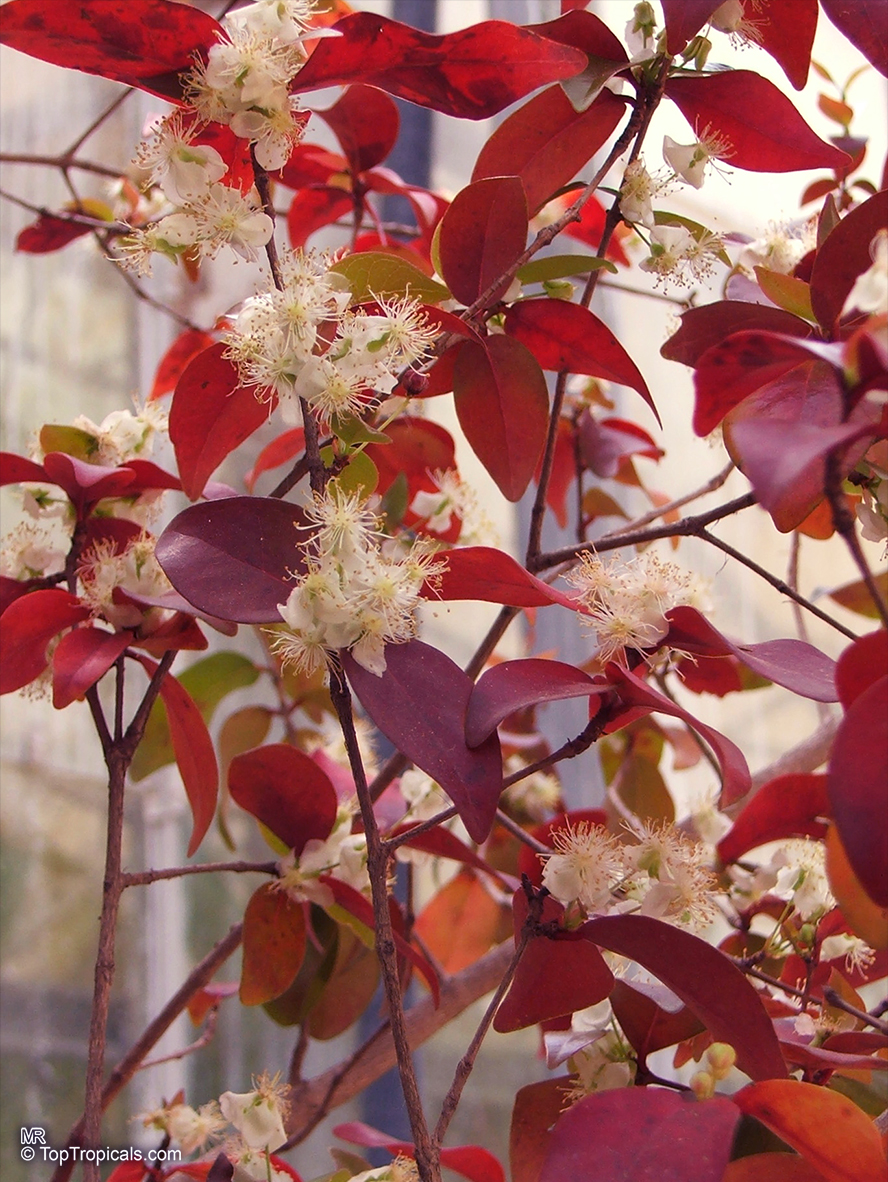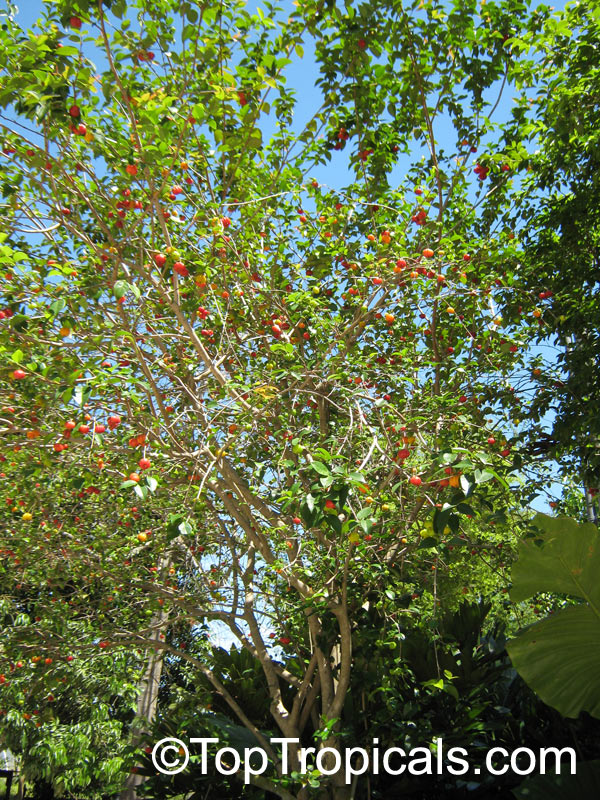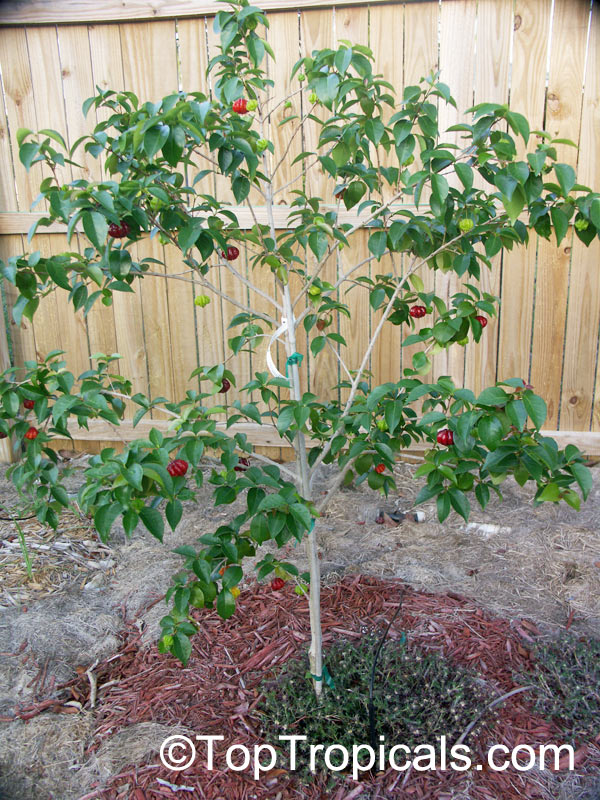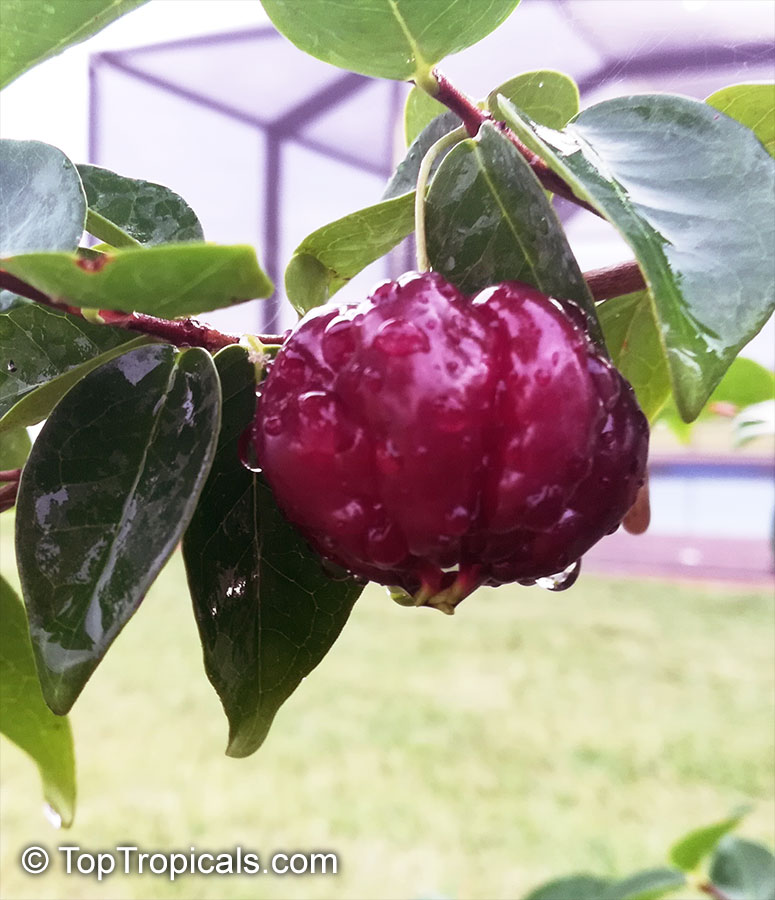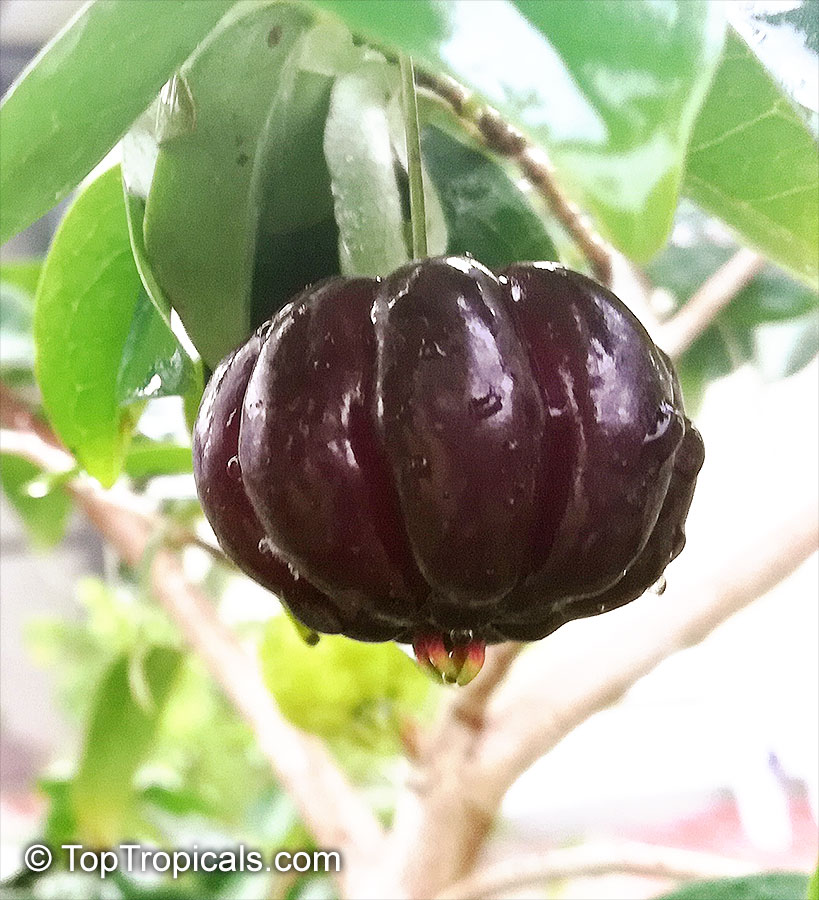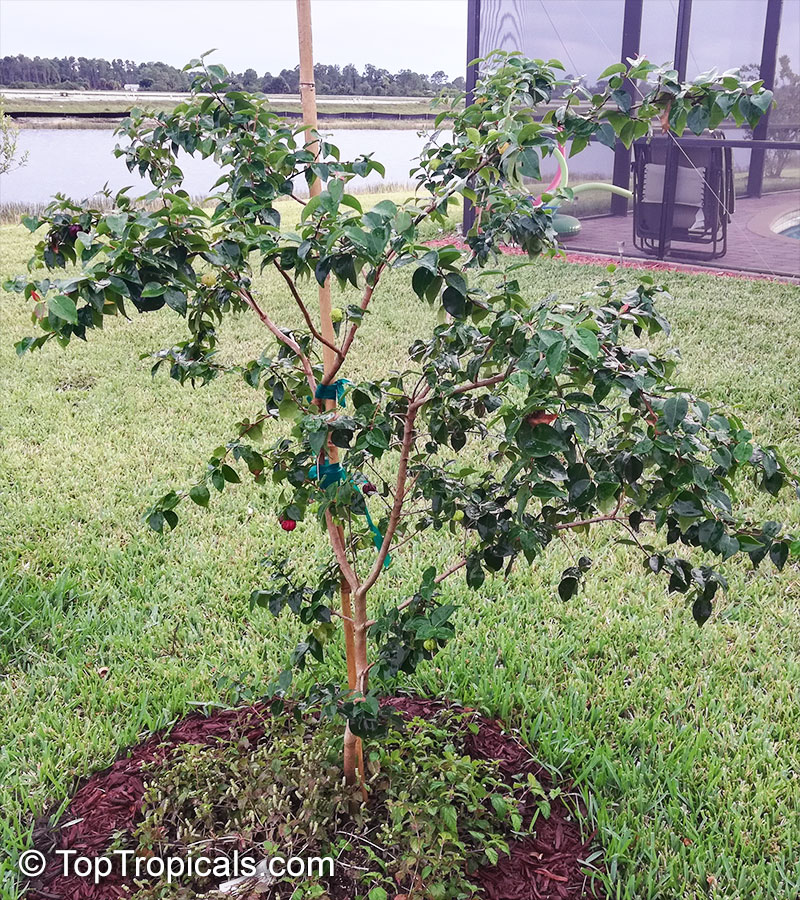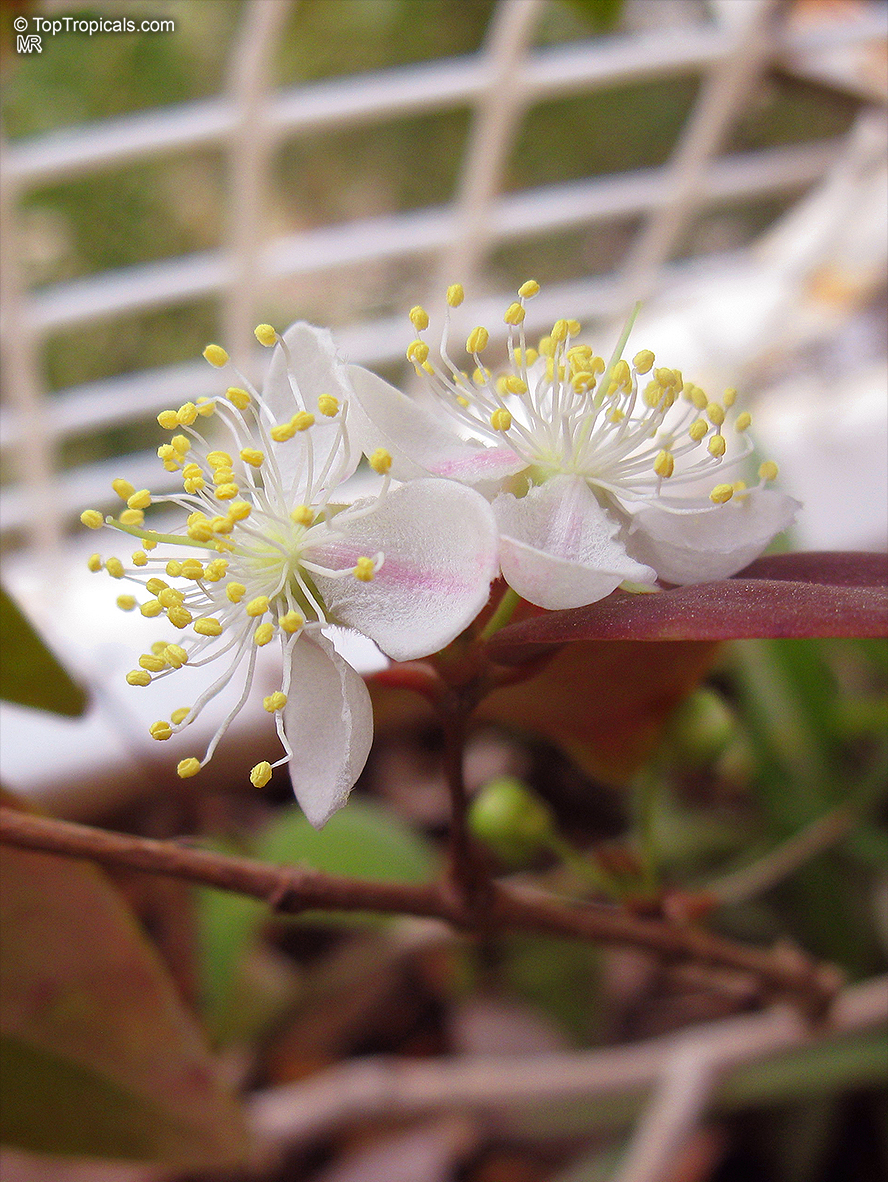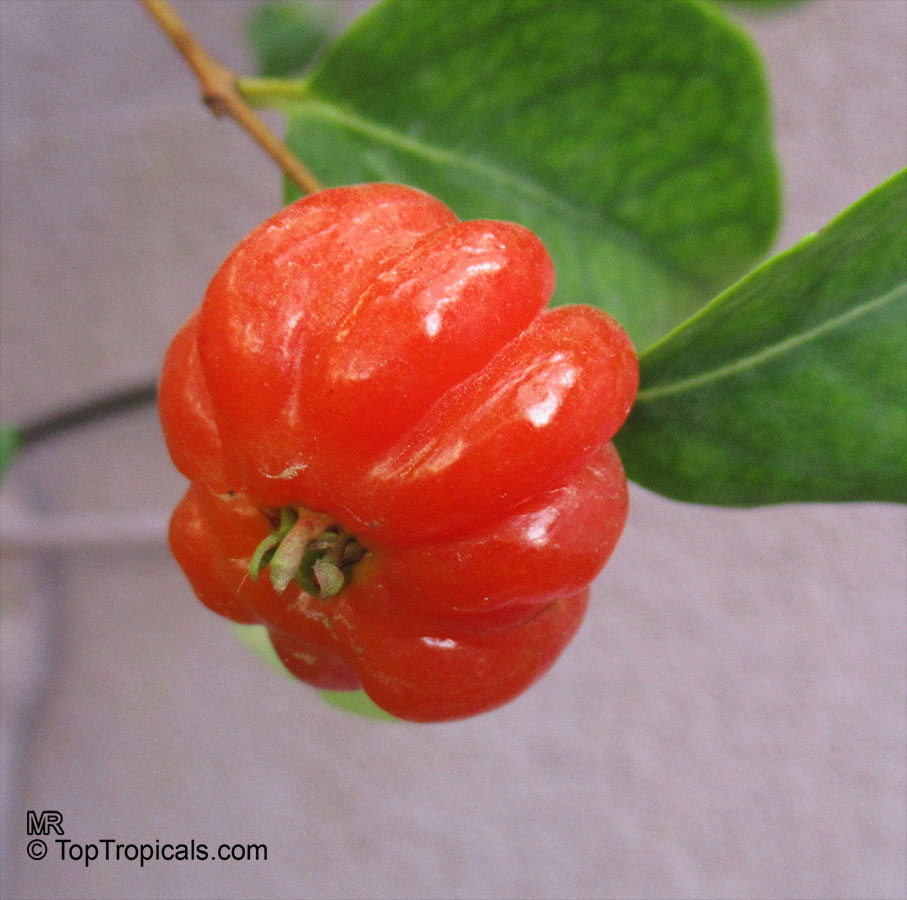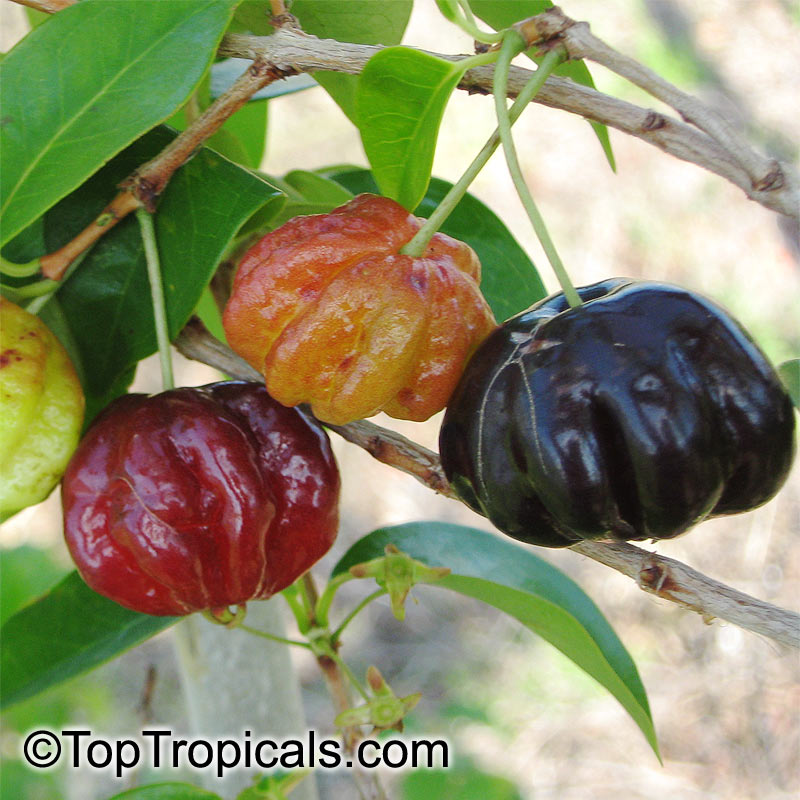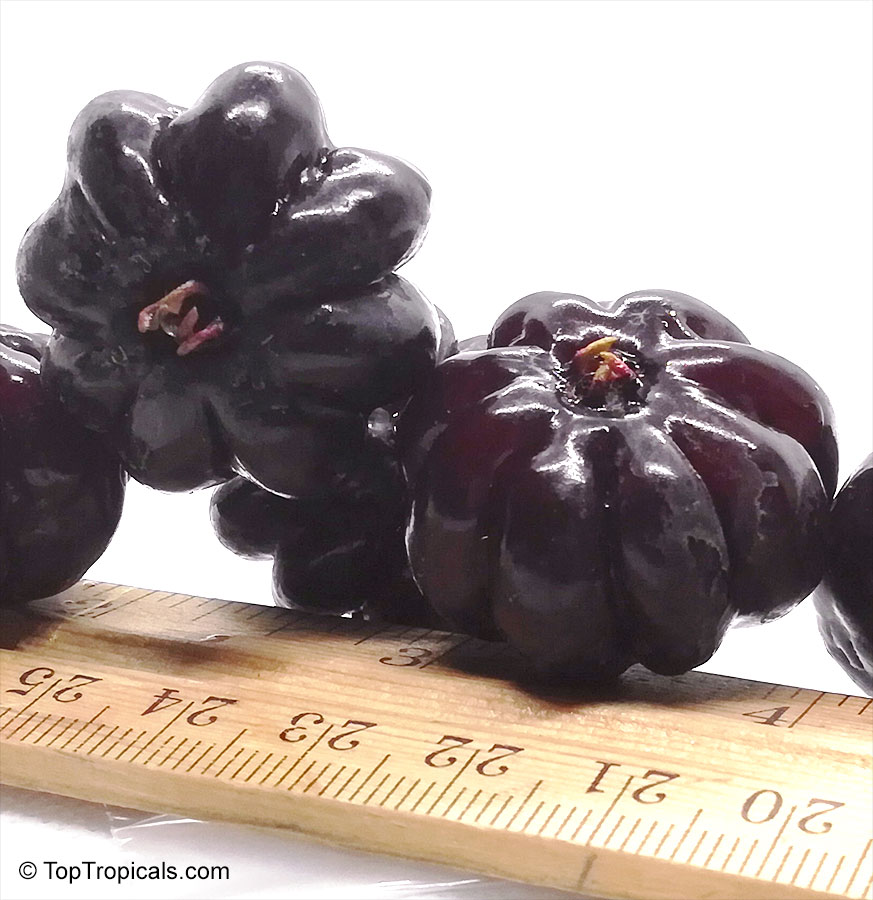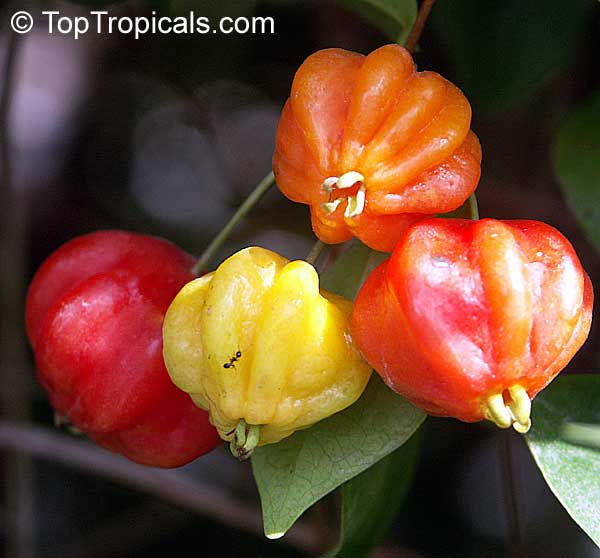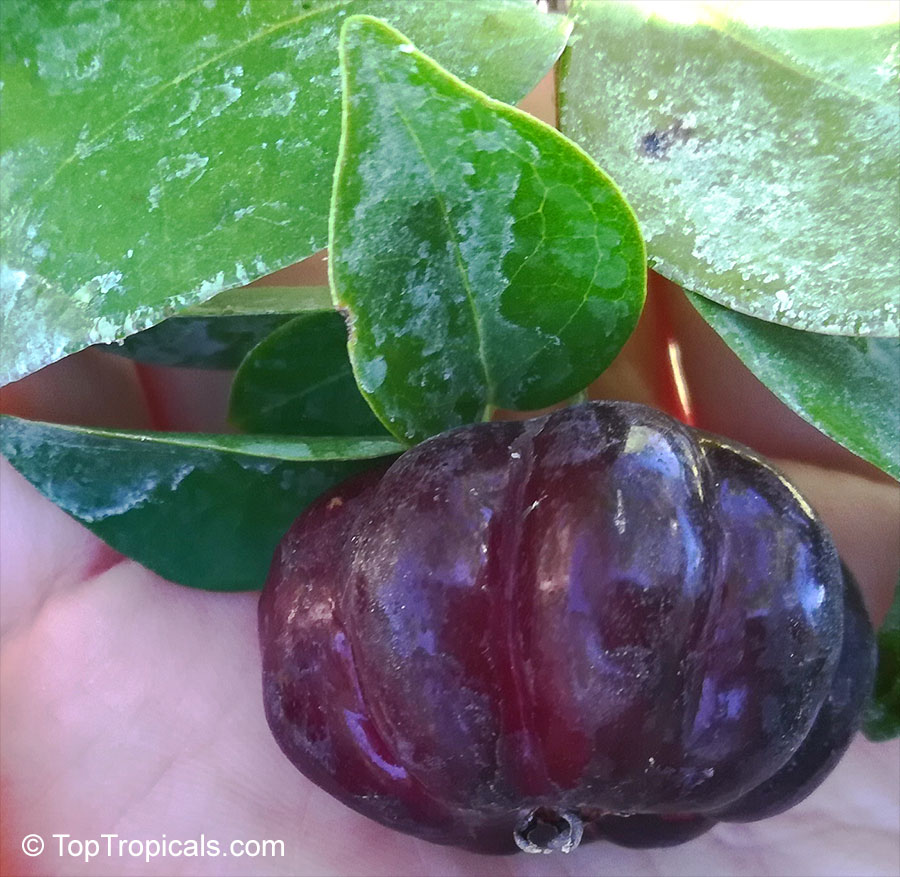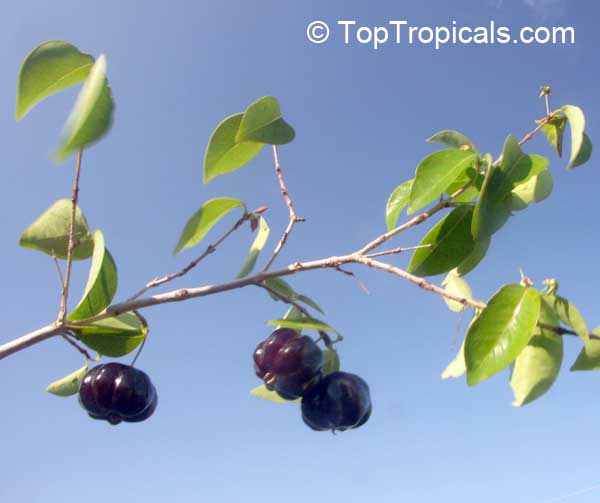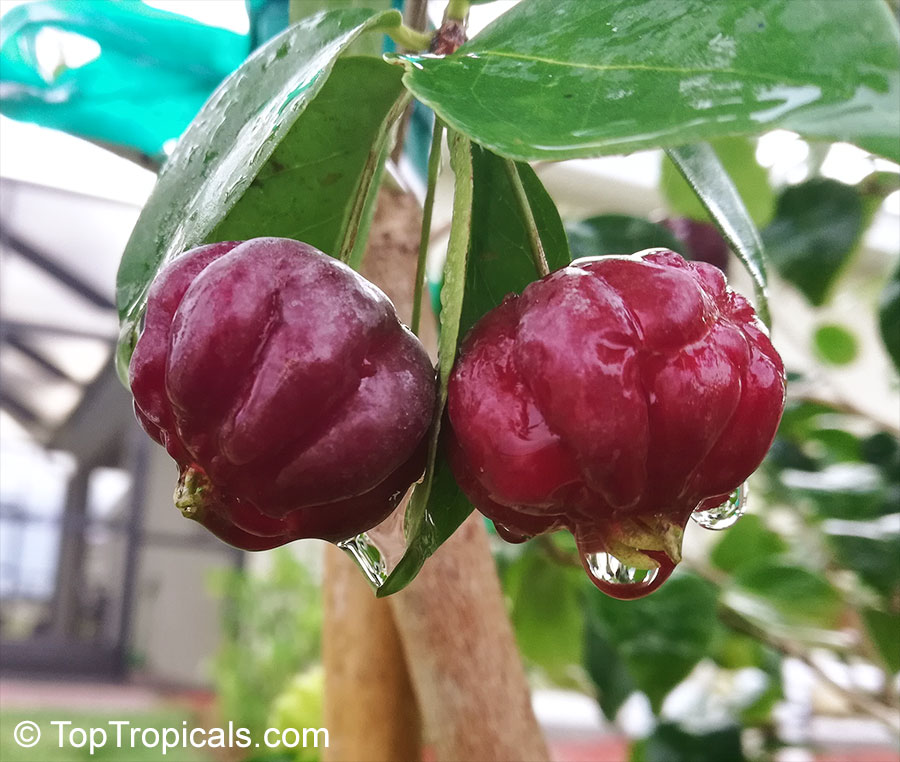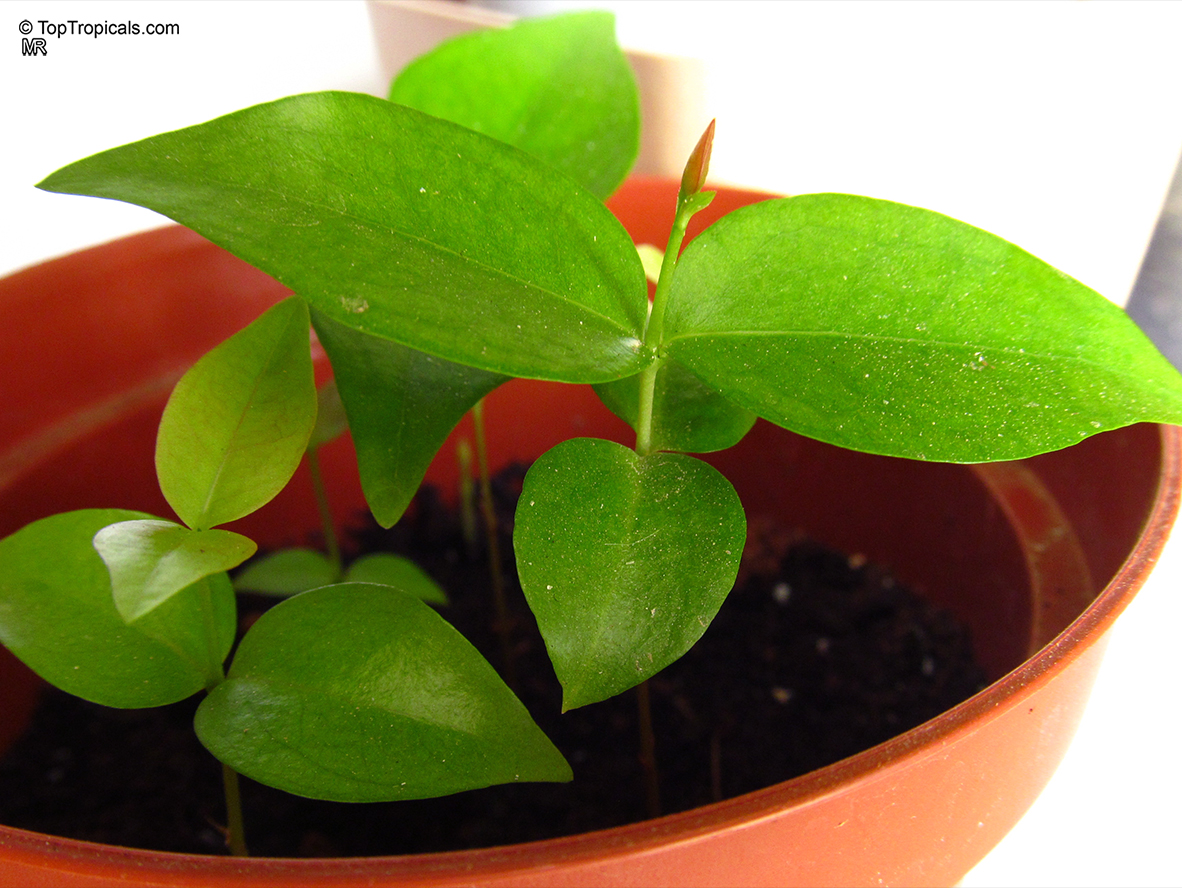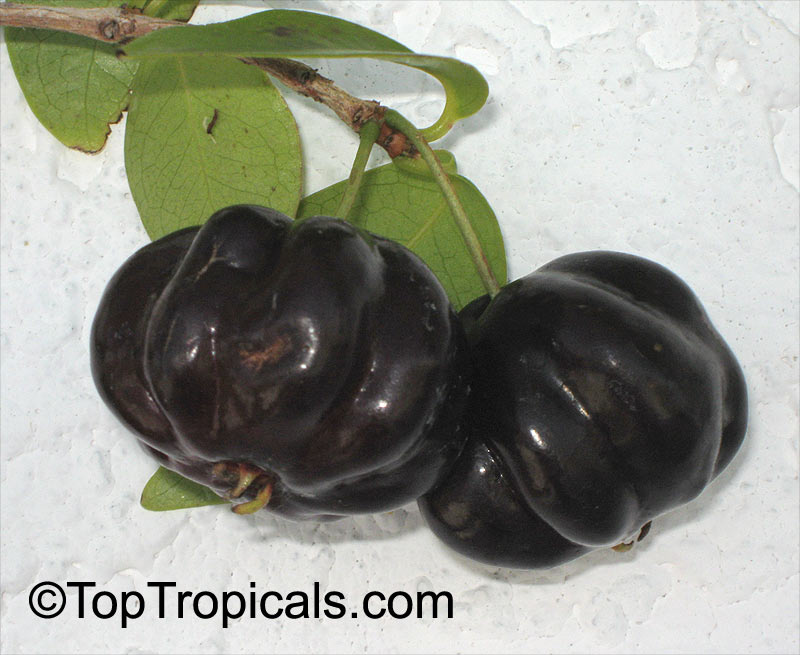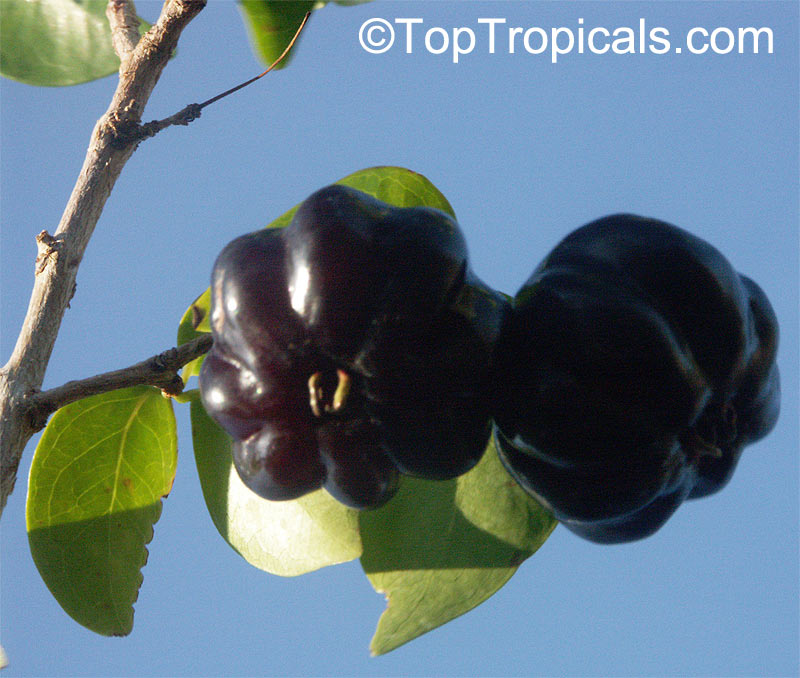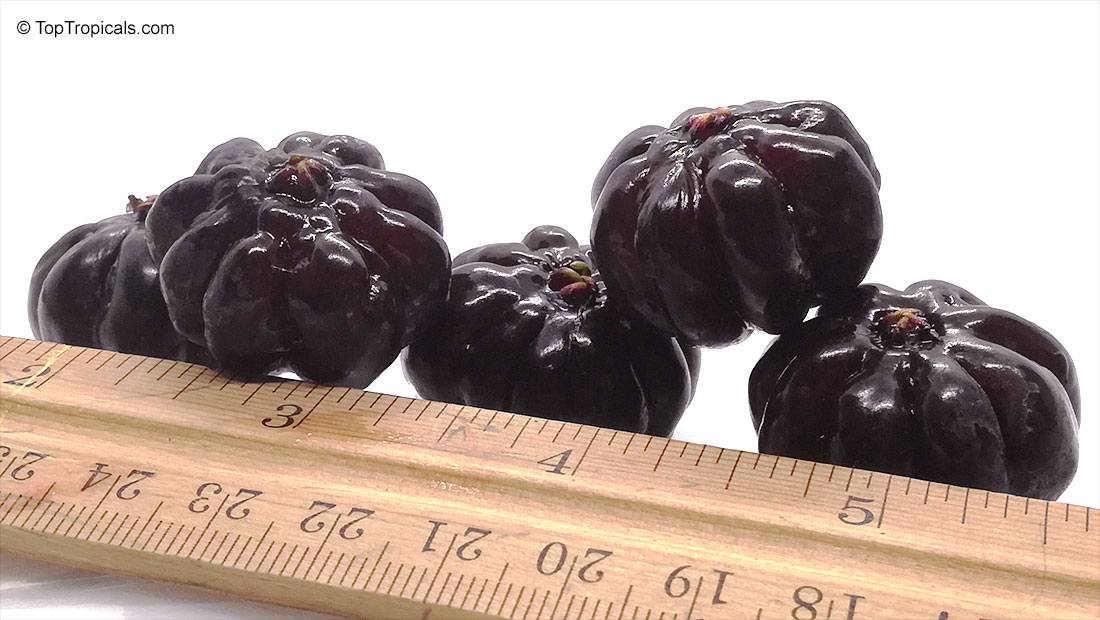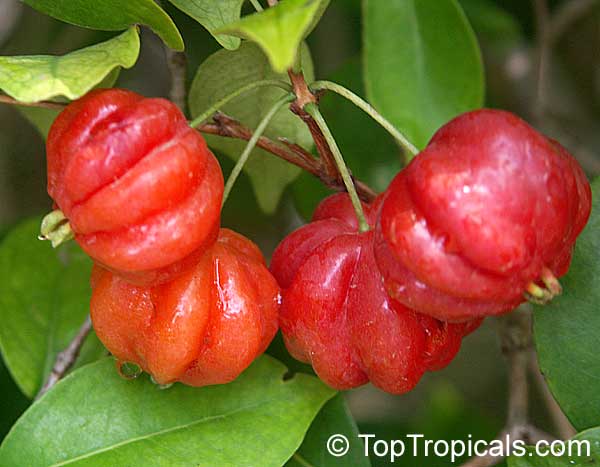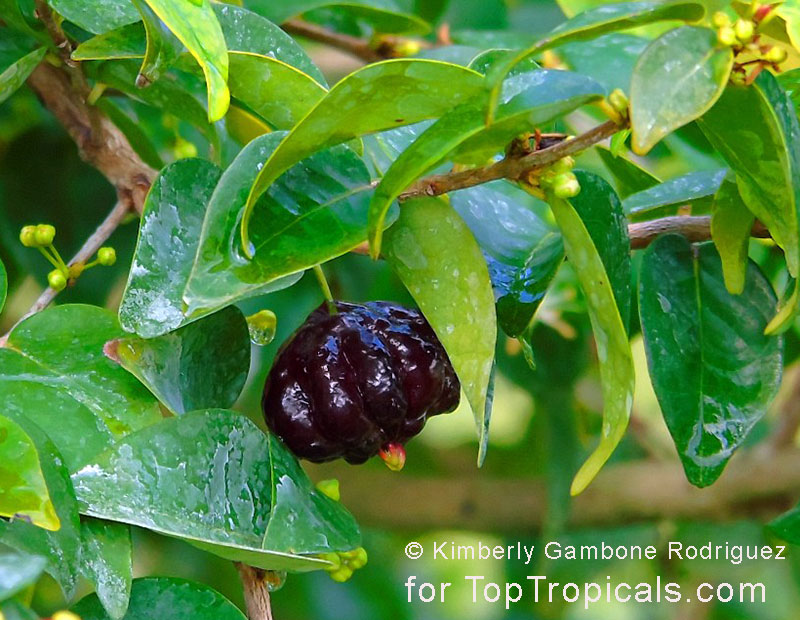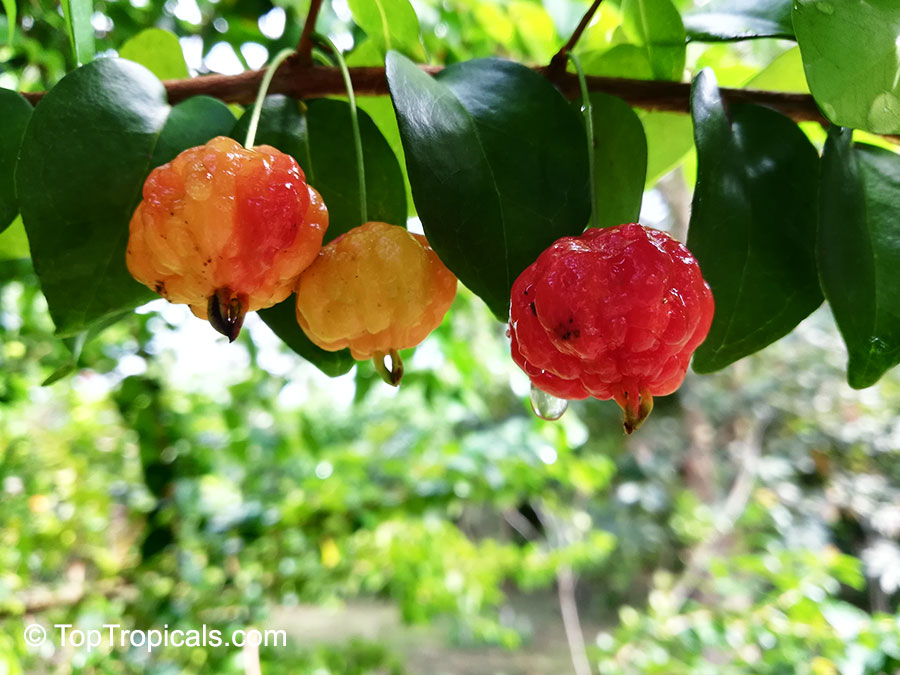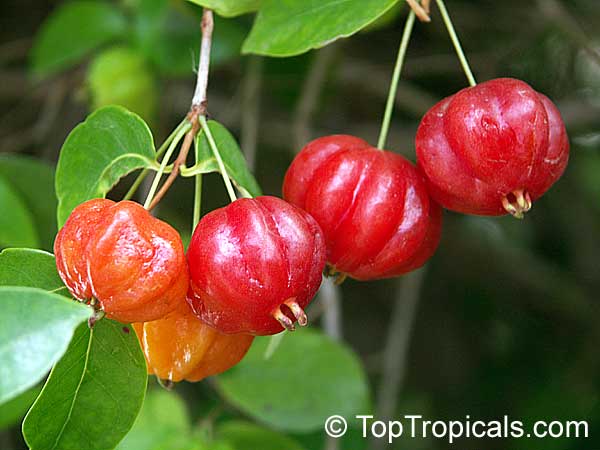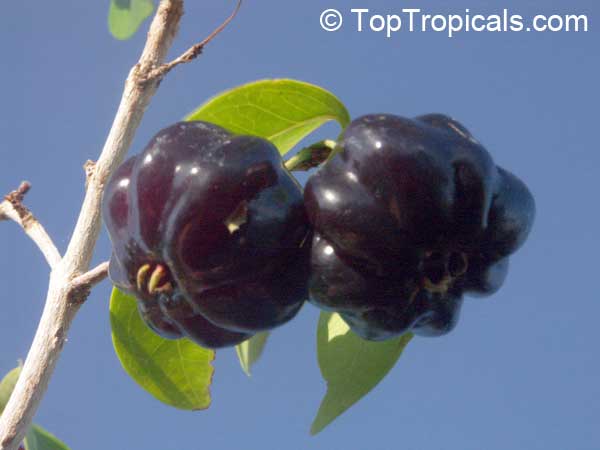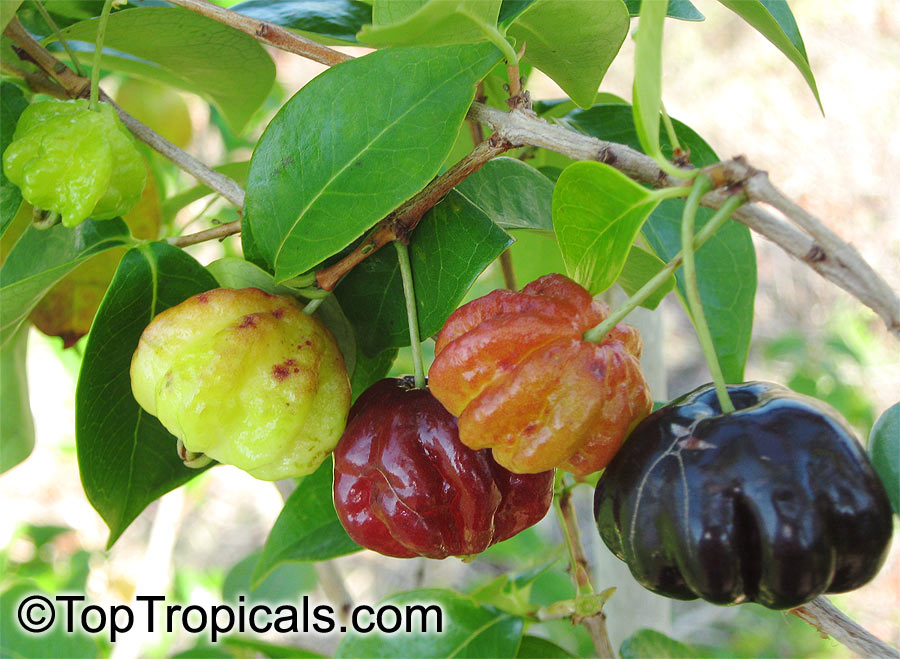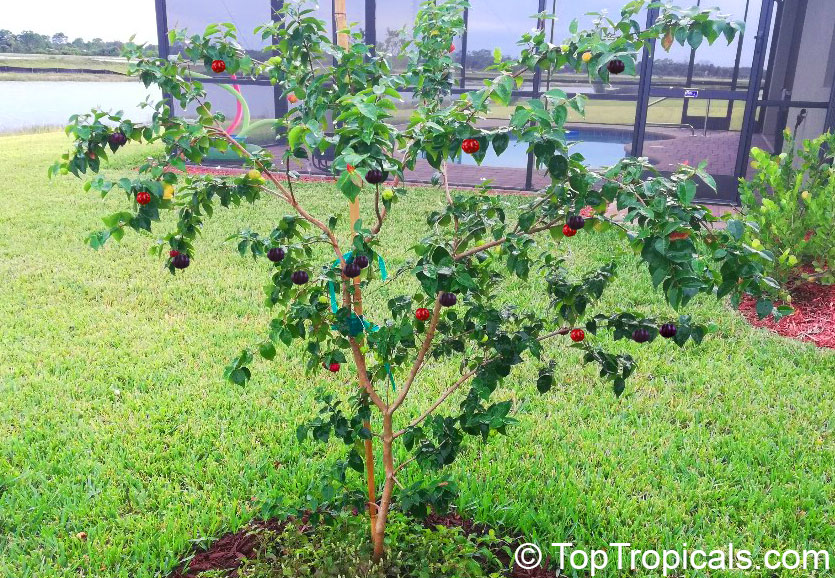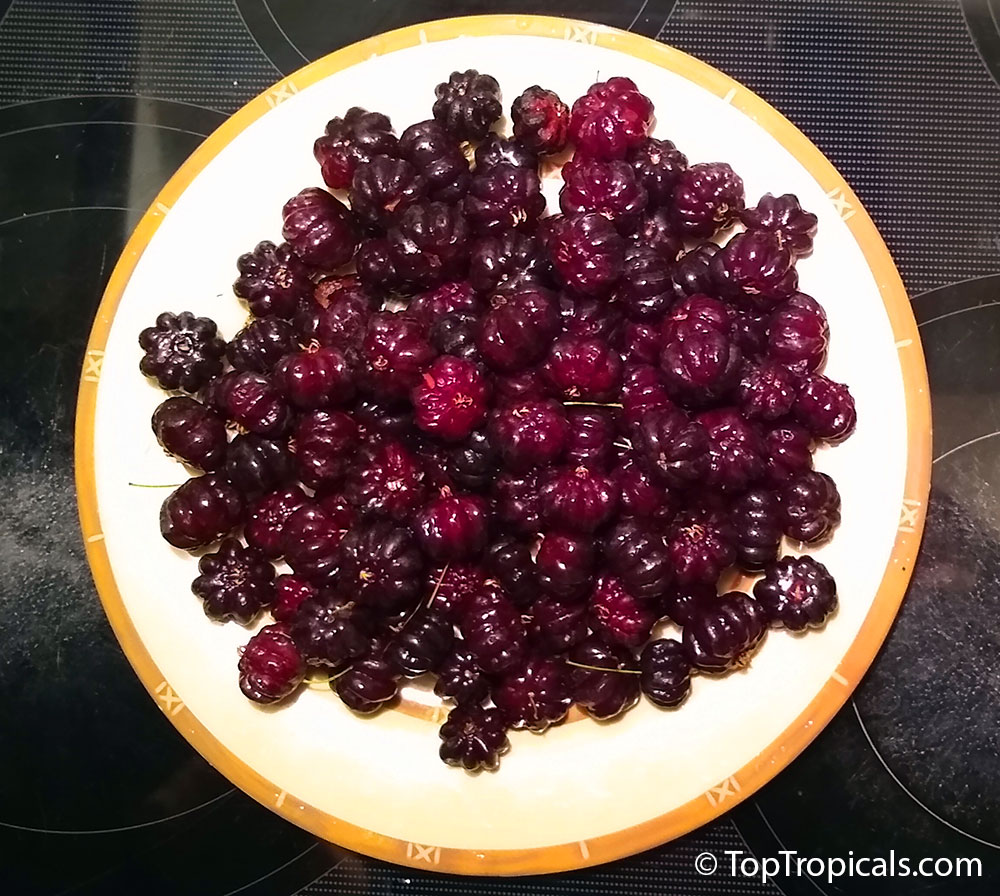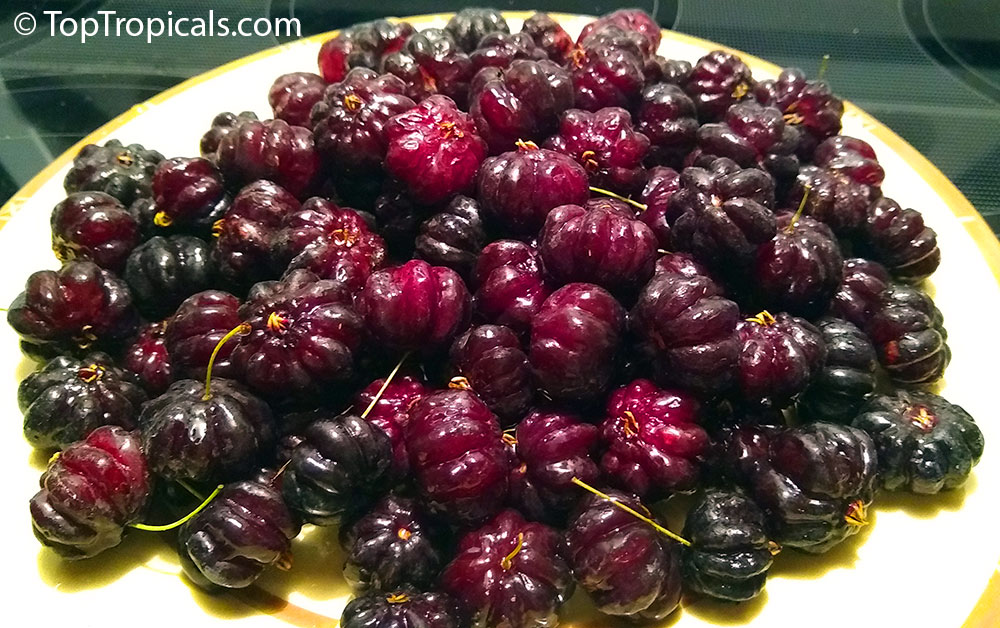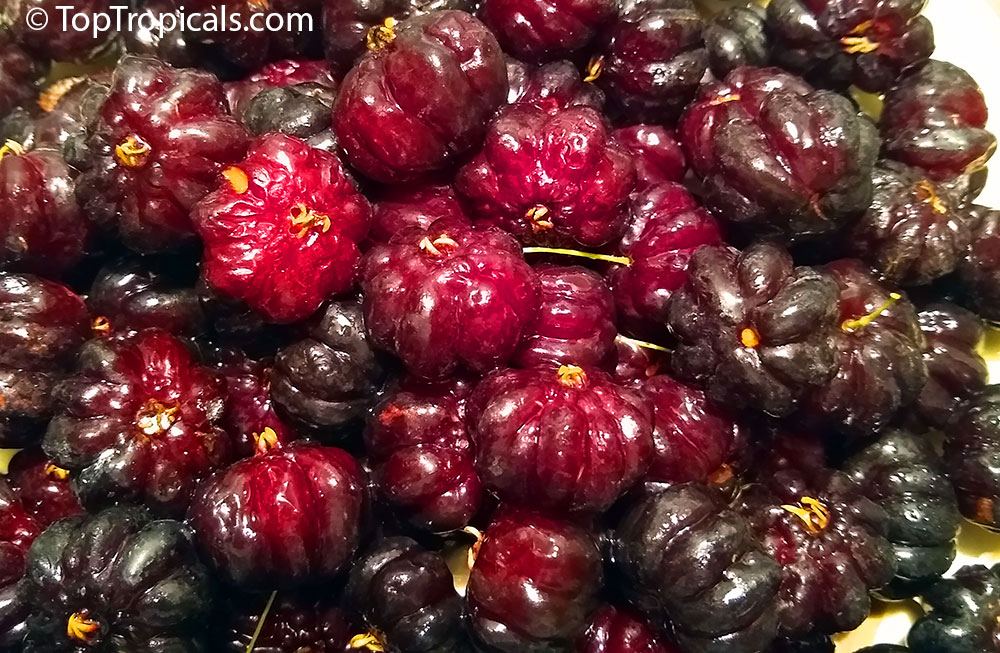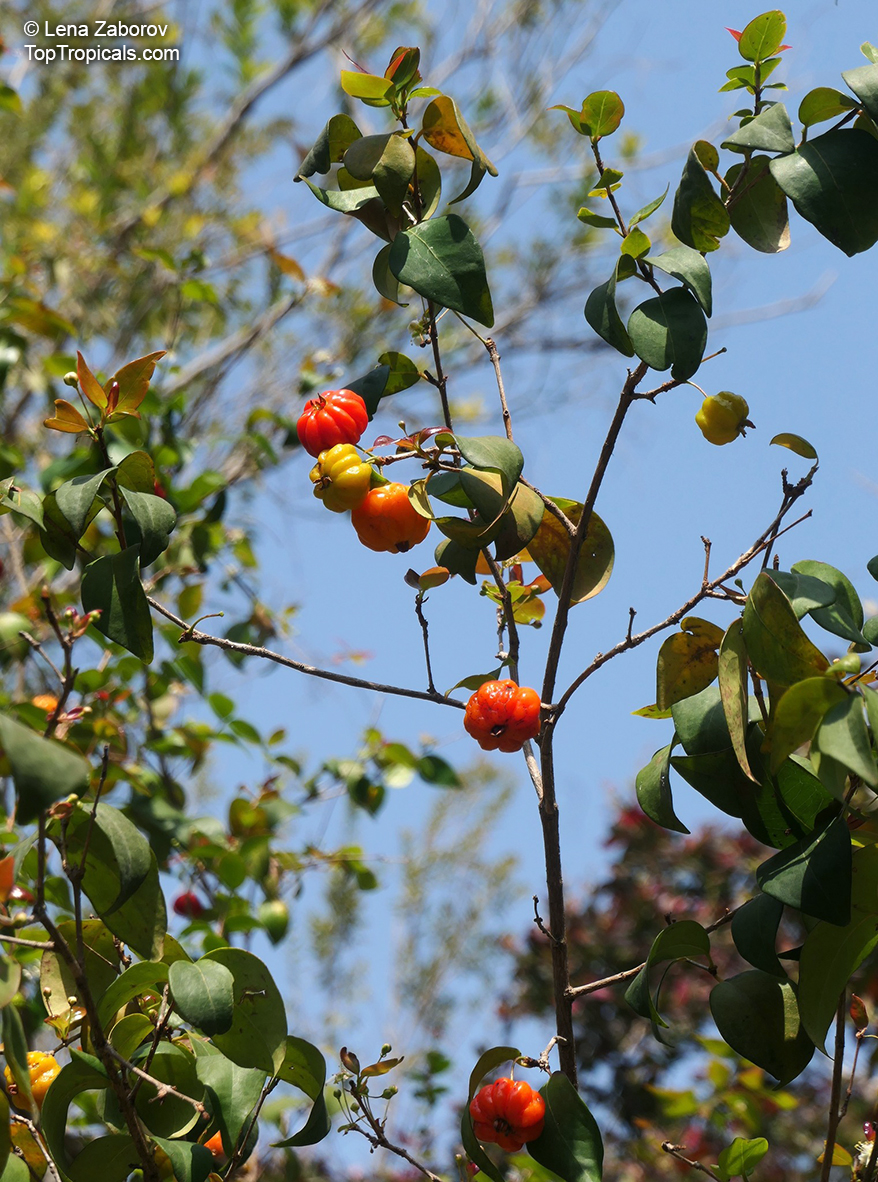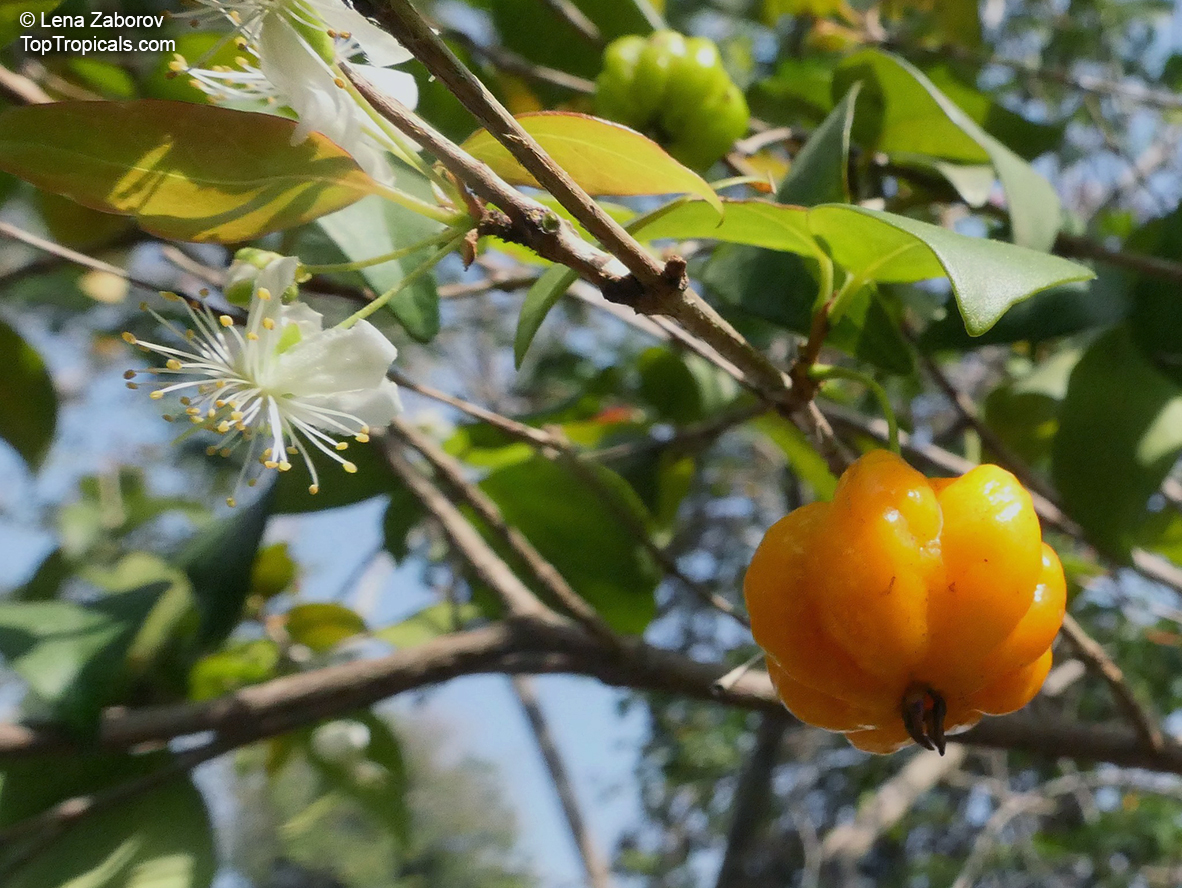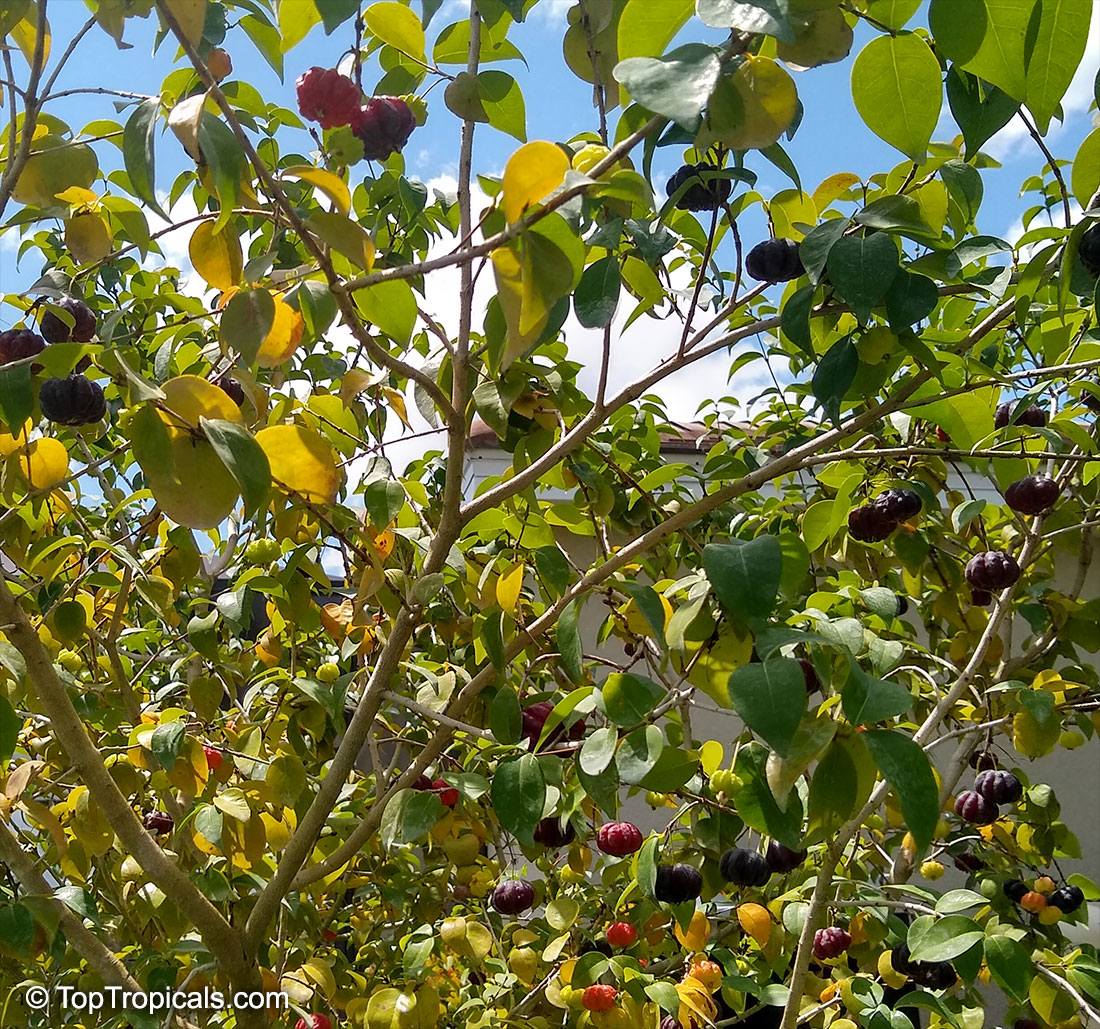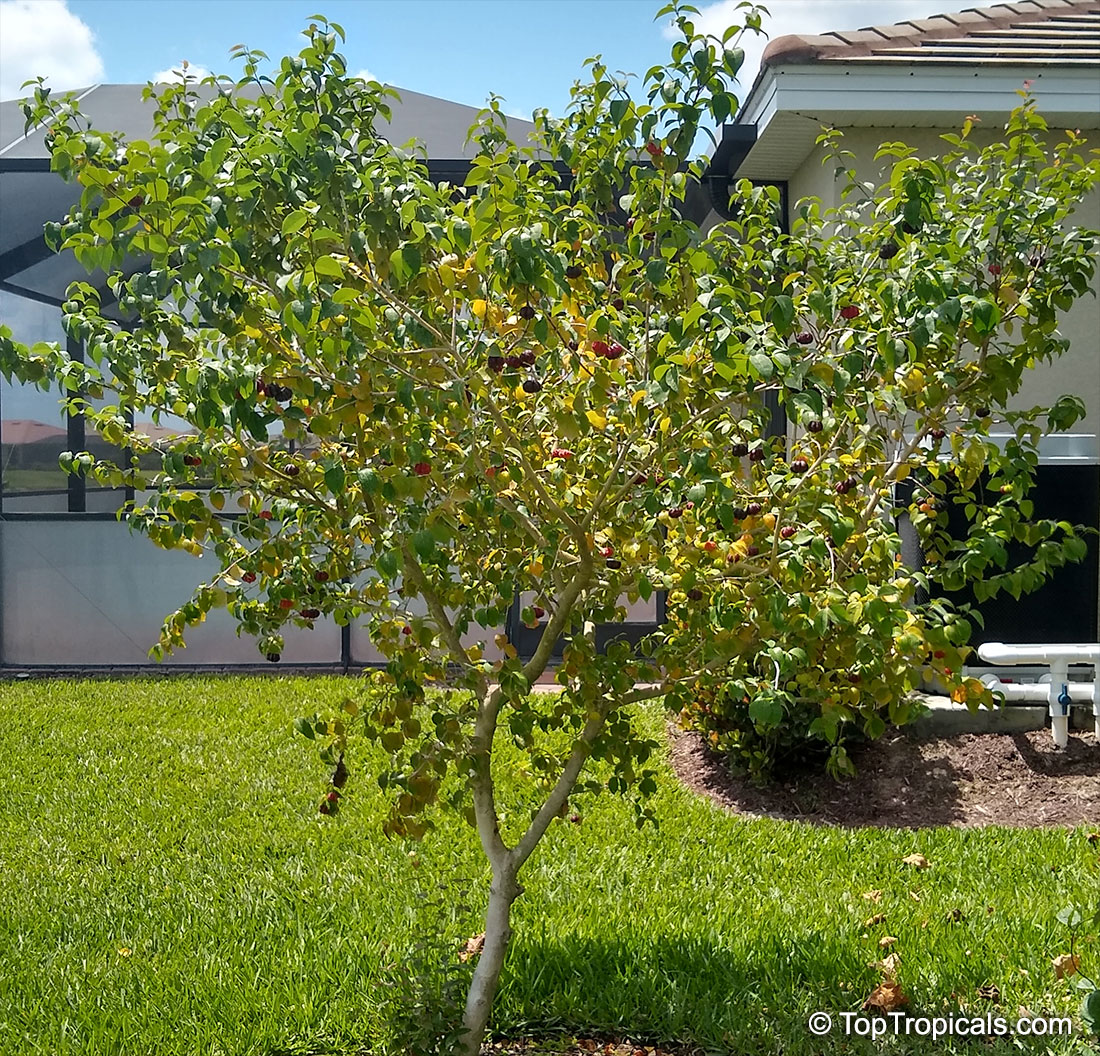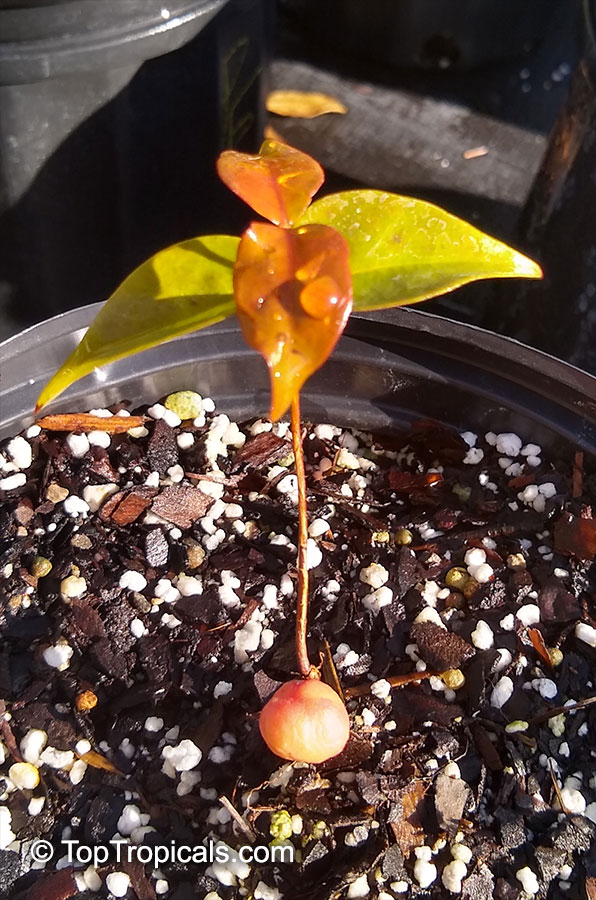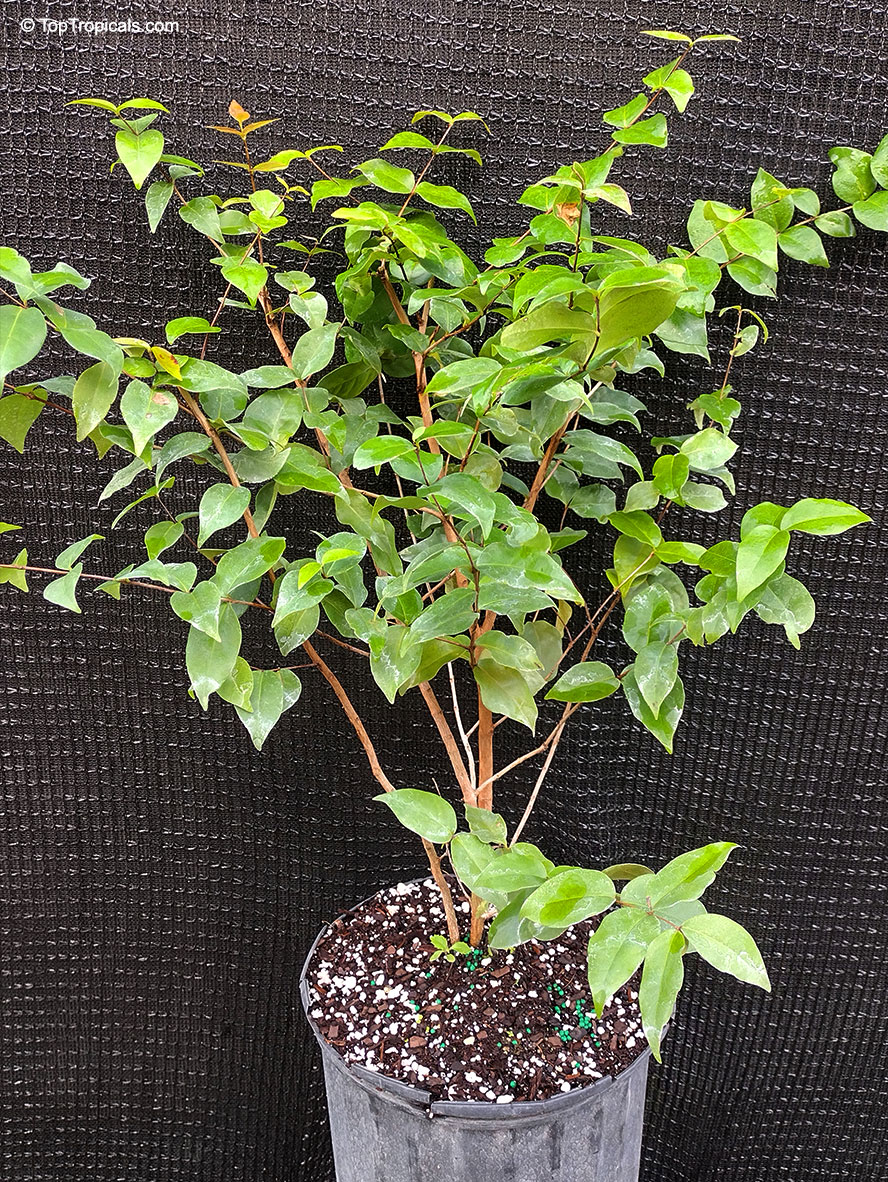Eugenia uniflora (Surinam Cherry)
Top Tropicals Plant Encyclopedia
Botanical names: Eugenia uniflora, Eugenia michelii
Common names: Surinam Cherry, Pitanga, Brazilian Cherry
Family: Myrtaceae
Origin: South America











The Surinam cherry is the easiest to grow of all edible Eugenias and an excellent fresh fruit. The native range of this small tree or bush extends from Surinam through Uruguay. It is very popular in Southern landscaping for its red-colored new foliage against the dark green of older leaves along with its red to black, ribbed fruits. The plant blooms profusely at the end of the spring, and then, occasionally the rest of the year. Fruit develop and ripen in just 3 weeks from flowering. They are deeply 8-ribbed and usually about 1 inch in diameter, although plants bearing fruits nearly 2 inches in diameter have been reported. The juicy sweet-acid pulp encloses a fairly large seed.
The fruit can be excellent or only fair, depending on the variety. The deep red, almost black fruited varieties produce sweeter fruit without that tart aftertaste that is specific for Surinam Cherry. The fruit can be eaten fresh, used to make pies, jellies and jams. The pulp is a good source of calcium, and a fair source of phosphorus and iron. In Brazil, the juice is fermented into wine or vinegar.
Propagation is almost always by seed, however superior varieties can be grafted. Red type and black type forms usually come true to seed. Surinam Cherry is an excellent choice for a hedge with regular trimming, or as a pretty specimen tree; the plant will be happy growing in a pot as well. Cold hardy (to lower 20's for mature plants) and undemanding, it grows well under minimum care providing irrigation which is especially important for young plants; established plants are drought tolerant. If left untrimmed, the bush growing in the ground eventually may reach 15' tall and 15' wide. In small yards, the tree can be cut back hard if it becomes too large; it will form a the bushy shape in no time. This tropical plant can successfully be grown in a pot indoors in the cooler zones. Indoors, misting of the plants is helpful in winter.
Learn more: Surinam Cherry Lolita and Bermuda Christmas Pie
Similar plants: Eugenia uniflora (Surinam Cherry)
- Blepharocalyx salicifolius (Murta)
- Eugenia brasiliensis (Grumichama)
- Eugenia confusa (Red Berry Stopper)
- Eugenia foetida (Spanish Stopper)
- Eugenia involucrata (Cherry of the Rio Grande)
- Eugenia luschnathiana (Pitomba)
- Eugenia neonitida (Pitangatuba)
- Eugenia pyriformis (Uvaia)
- Eugenia reinwardtiana (Beach Cherry)
- Eugenia rhombea (Red Stopper)
Recommended Fertilizer: SUNSHINE C-Cibus - Crop Nutrition Booster
SUNSHINE-Honey - sugar booster
Recommended Fertilizer: SUNSHINE C-Cibus - Crop Nutrition Booster
SUNSHINE-Honey - sugar booster
7 gal pot. More developed root system, thicker trunk and branches. Plant height depends on growing season and variety. Dwarf varieties are slow growers and may be shorter. Contact us for exact size description if size/height matters to you. 7 gal plants may be shipped separately from other items by Ground service due to large size. See here time in transit (business days, excluding Sat-Sun!)
Recommended Fertilizer: SUNSHINE C-Cibus - Crop Nutrition Booster
SUNSHINE-Honey - sugar booster
